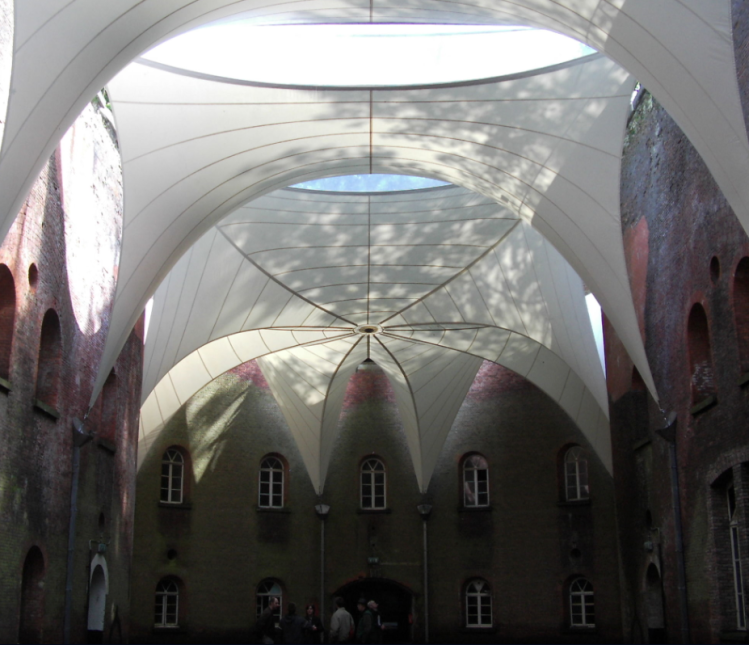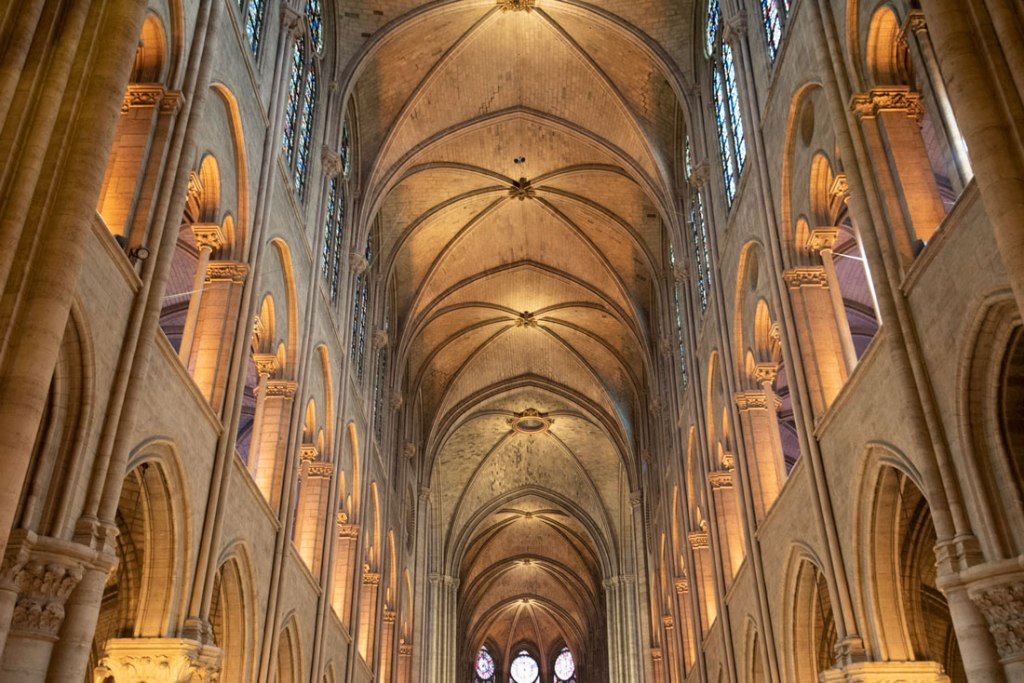
Although The Nomad Concept based itself on Tibetan-tent designs, the application in FORT-4 reminds one more of a cathedral than a nomadic tent. FORT-4, laying in a chain of forts around Antwerp, was built to protect the trading port of Belgium. When most wars were over, they transformed the grand courtyard into a place for recreation and art, instead of death and war. The Nomad Concept project aided in that transformation by adding on a cathedral style roof as to make the courtyard waterproof.

Amandus VanQuaille founded the concept when he travelled through Tibet and Nepal during his college years. When living there for seven years after his studies, he helped renovate Buddhist temples and toured with the nomads that inspired him so. He was fascinated by the fine textiles played with the light on the world around it. He often says having a Nomad Concept design in your garden is like having your very own light-sculpture. The temples he worked on while residing these implemented light play too, enlightenment is the base of Buddhism, which is often depicted as light. He tried to implement this enlightenment into western culture but had to adjust the aesthetic somewhat as they don’t know much of Buddhist design. He translated the worship places into a more western known concept, cathedrals. To still keep some of the nomadic presence, the concept incorporates made to measure, delicate textiles. While not handmade as they would have been in Tibet, the fabrics do still carry an air of craftsmanship because they are all unique. Only made for projects for the Nomad Concept which has individual projects every time. This is why all the textiles get a narrative, in this instance, FORT-4 changed its story from defeat, failure, and war, and it changed it to culture, music, art and because of its link to cathedrals, God.
Because the city wanted to change the narrative of the structure, they needed to make a hall for these cultural happenings. As a fort is unreachable with cranes or other heavy materials, they had to find another way. The Nomad Concept could carry all their materials in through the tunnel-like system connected to the courtyard. The choices made when they joined the textiles to the walls makes the project resemble a cathedral. The arches were created by pulling the textile membranes tightly onto steel cables, to create a Romanesque vaulted effect. The hall leading up to the actual choir got made in this manner. The chorus itself, however, was too sweeping to realise this concept, so they had to rely on a ribbed vaulting system more often found in Gothic cathedrals. They did this by connecting the cables to a centre plate just as the vaults in Gothic cathedrals connect to a keystone. The walls of a fort are relatively high; this made the construction far above the ground, again reminding of the ceilings of a cathedral. The fact that the fabrics as high up in the distance makes one think it would not be immersive to stand beneath it, but to the contrary, the lines leading from the roof down through the massive walls causes a grand impact aligned with standing in the Notre Dame. The lightness in this space cannot be underestimated. Windows created in the areas between the fabrics are covered with a transparent membrane to make the whole arena waterproof. The light patterns these windows create on the floor also makes one think of stained glass windows. The textiles transform this fort into a place as alive with music and reflection as any cathedral.

I believe the likeness to a cathedral was not only a translation of spiritual energy to a western eye, but it also complements many other aspects of the nomadic tents the concept incorporates. In a purely structural point of view, the skeleton of a cathedral, a tent and the fort is very similar in concept. Loadbearing pillars of a cathedral are similar to loadbearing poles of a tent, and the sturdy walls of the fort. Just as the roofs of these structures are all made to feel light and airy. Even the function of the three forms is similar. It is all to give a relaxed and calm feeling to everyone entering, a house where you can be yourself, whether by tuning into God, living your life or enjoying art. While the materials used are so different, the outcome is the same. The stones used in a cathedral are heavy and sturdy, the light poles and handmade fabrics of a nomadic tent, made to be able to move around, and the project in FORT-4 is to create an arena for the arts with modern materials such as PTFE, polymer and steel. One thing they are different in is the extent of the time these materials last. A cathedral can stand on its ground for hundreds and hundreds of years, while the tents are disposed of when they reach their limits. The project in FORT-4 is a mix of the two, while the fort is there to stay, the materials the Nomad Concept incorporates, are only meant to last 5-6 years, while the material could last over 30.
Going back to my statement, while the concept takes inspiration from Tibetan nomadic tents and temples, the resemblance to a cathedral is uncanny. As we have seen, there are a few similarities between the tents and cathedrals, but I cannot help but feel while the original concept leads back to Tibet, the actual execution of the Nomad Concept in FORT-4 was inspired by cathedrals both Romanesque and Gothic. I know one thing for certain, I am always surprised when Belgium invents something other than waffles, beer, chocolate, and pool balls.